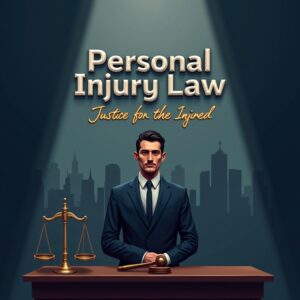Personal injury law gives you a path to seek compensation when someone else’s actions cause you harm. But that path is not automatic.

“You must show that the injury happened, and that it was the result of what someone else did or failed to do. That burden is yours. The law calls it a preponderance of the evidence,” says personal injury attorney Brendan McDonald of New Mexico Accident Firm, LLC.
Your side of the story has to outweigh the other side’s for you to win compensation, and what you do after the injury plays a major role in whether that happens.
So what should you do?
Step 1: Get Checked Out, Even if You Feel Fine
Assume your body is withholding information. Pain is not always immediate, and it is not always loud.
Soft tissue injuries can feel like nothing until you sleep. Brain trauma can feel like a mild headache until the swelling builds. The smart move is to get evaluated quickly, not just for your health, but for your case. Documentation from a licensed provider may end up being your most important piece of evidence.
Step 2: Know That the Clock Is Ticking
New Mexico law gives you three years to bring most personal injury claims. But that window does not always open and close the same way for everyone.
In cases involving children, government agencies, or hidden injuries, the timeline can start earlier, later, or get cut short. Miss the deadline, and the case will not be heard.
Step 3: Talk to a Lawyer Before You Talk to the Insurance Company
After an accident, you may get a call from an insurance adjuster. They will sound calm. They may ask how you are doing. They might even say they want to help you “get through this.”
But that person does not work for you. They work for the other side: the person or company that caused the harm. Their job is to lower what the insurance company has to pay, and that starts by asking questions you are not ready to answer. The better move is to talk to someone who works for you first. That person is your lawyer.
Step 4: Preserve Documentation
Long before your lawyer sends a subpoena or interviews a witness, the first set of evidence usually comes from you. Medical reports, receipts, appointment records, and time off work: these all start with your own actions.
Anything tied to the injury should be saved. That includes physical bills, digital confirmations, and even photos of medications. If you are unsure whether it matters, save it anyway. Your lawyer will know what to do with it.
Step 5: Stay Off Social Media
You might want to update friends and family after the accident. That instinct is normal. It can also be dangerous.
Insurance teams and defense lawyers often check public posts. A night out, a hike, even a smile in a photo, can be twisted to suggest you were not really hurt. It is safer to pause your updates until the case is resolved.
Final Word
The choices you make after an accident tend to stick. Working with a New Mexico personal injury lawyer helps you make those choices with better information. They know what paperwork matters and how to speak to insurers without giving up your case. And most importantly, they know how to explain the trade-offs before you agree to anything.